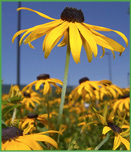In today’s gardens, it is hard to determine a wildflower or weed from any of the other plants people have growing in their garden. In truth, a wildflower is one that grows naturally in the wild. When people think about wildflowers, they tend to think of those growing happily in deserted lots, in the ditches along the road, or along the hillside out of town. Many of the cultivated wildflowers started in these lowly beginnings and many can be still found there. However, there is a growing interest in many of them for gardens. After all, they are easy to grow, require little to no attention, and require only the water nature provides. As an added advantage, they will often grow in difficult growing areas, allowing gardeners to brighten and beautify “ugly” corners of their yard.
Wildflower packets are generally a wide variety of seeds mixed up for throwing out in fields and yards for a naturalized look. This type of planting will produce continuous blooms over the spring, summer, and well into the fall. This theme has grown in popularity due to its low-maintenance benefits.
More of these wildflowers have made their way into cultivated gardens and are available in both seed form and from nursery stock.
Black-eyed Susan (Rudbeckia hirta)
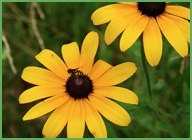
Black-eyed Susan, also known as Rudbeckia, is an annual or in some locations a short-lived perennial herb. The plant reaches several feet in height and offers prolific flowering of bright, 3-inch, yellow flower heads that have dark centers all throughout the summer. It appreciates a full-sun location but will adapt to partial-shade. If there is too much shade, the plant will produce fewer flowers. This plant is great for sowing small gardens or for tossing seeds across a large field as wildflowers. As it is great for attracting all kinds of pollinators, spreading this seed in an orchard works well. The plants can be mowed back in the fall after the plants have set seed in late July to mid-August.
It attracts green lacewings, butterflies, honey bees, and bumble bees among other beneficial insects. It is also a good companion plant for coneflower, pennisetum, stonecrop, Russian sage, and garden phlox.
Bushy Aster (Aster dumosus)
This plant is yet a member of the aster family and can usually be found dotting the countryside. It is a perennial that grows to approximately 3-feet tall and has many small flower buds. The flowers are white or a soft mauve with a yellow center and are usually about ½ inch across. Like most other family members, the bushy aster flowers from August to October. Technically this plant could have gone into the bulb section as it spreads under the ground but it is better known as a wildflower.
The seeds of this plant are eaten by the American Goldfinch, sparrows, and chipmunks. The leaves are food for rabbits, deer, the Painted Lady butterfly, as well as many others. The flower attracts pollinators like bees, butterflies, and flies. The plant also attracts insect predators like praying mantis and spiders. Bushy asters are known to provide shelter for small ground animals and American Goldfinches have been known to build their nests in them.
Chicory (Cichorium intybus)
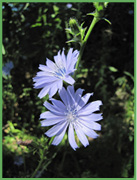
Chicory is another common wildflower. It is a perennial that produces blue flowers and dandelion-looking leaves. The bush can grow up to 4-feet and is often seen across meadows and roadsides. The flowers resemble the daisy with a bluish center moving to purple at the edges. The flowers reach about 1½ inch wide, blooming from June to October.
Chicory flowers attract many insects for the nectar and pollen including bees, butterflies, and flies. It also attracts predatory insects like yellow jackets and lacewings. The seeds are eaten by mice while rabbits and deer eat the leaves and stems.
Dandelions (Taraxacum officinale)
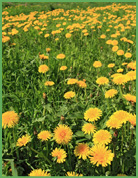
Dandelions are maligned in much of the world for being a persistent weed, but they have much to offer in other ways. They are an easy to grow perennial that blooms with yellow flowers on a hollow stalk. They require no care and pop up in gardens, all over lawns, and in crevasses and cracks of cement in ways that defy logic.
For the compost pile, pull the dandelions and add them to the pile before they go to seed as their deep taproots bring up nutrients from deep in the soil to add to the compost. They are known as an early source of nectar for ladybugs and will bring in pollinators like bees, flies, and butterflies, making them great to plant around fruit trees. Dear and rabbits eat dandelion leaves, and birds eat the seeds.
Goldenrod (Solidago)
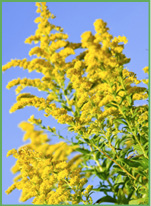
Goldenrod is a common wildflower found throughout North American with more than 50 known varieties. They are all late summer to fall bloomers, most of them producing long stalks full of bright yellow flower clusters. They can found in full sun, partial shade, rich soil, and poor soil. They are often considered a weed but with so much natural interaction between insects, birds, and animals, the plant is an essential part of nature.
This plant attracts bees, wasps, butterflies, moths, flies, and other insects with its nectar and pollen. It also attracts wasps, spiders, praying mantis, lacewings, ambush bugs, assassin bugs, and beetles. Birds are attracted to the flowers and the insects. Deer and rabbits will feed on this plant. It is known to shelter many critters like goldenrod spiders, moles, mice, and birds.
Lamb’s Quarters (Chenopodium album)
Lamb’s quarters is also known as pigweed. Like most wildflowers, lamb’s quarters, which offers edible leaves, is easy to grow. It thrives in rich or poor soils and can be sown in the garden or you can toss the seeds by the handfuls out on a fields. The plants bloom in the summer through to the fall, offering tiny green flowers on the 1- to 3-foot tall plants. The flowers change to tiny fruits with even tinier black seeds. They self-sow freely so to control the spread, snip the flower heads before they go to seed.
Lamb’s quarters is a great companion plant for corn. They are also a good worker in the compost pile but pull them before they go to seed. Lamb’s quarters is also known to attract parasitic wasps. The seeds attract chipmunks, squirrels, and birds. Deer will eat the entire plant.
Oxeye Daisy (Leucanthemum vulgare)
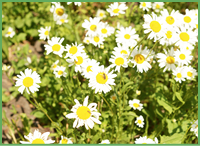
This rapid-spreading perennial can be found through many parts of the United States and is often confused with the Shasta daisy, which is a larger, more robust plant with larger flower heads. The oxeye daisy is a rampant weed in some area and in southern British Columbia, it is considered a noxious weed, meaning it is troublesome and difficult to control. The flowers are typically only 1½ to 2 inches across and can be seen from May through July, and they have an odor that resembles sage. It grows in most soil conditions.
The oxeye daisy is great for attracting ladybugs, parasitic wasps, and tachinid flies.
Queen Anne’s Lace (Daucus carota)
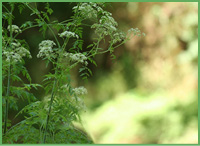
This wildflower is also known as wild carrot. The plant grows up to 4-feet tall with long, fern-like leaves but it is the flowers that makes this plant well known. The plant’s flowers are tiny, white, and set into a lacy, flat-topped rosette. Each flower has a purple center and shows up from May to October. It lives for two years, flowering in the second year. The large taproot is an edible carrot. Be careful because the foliage can cause skin irritations.
Queen Anne’s lace attracts predatory insects like the green lacewing, which eats aphids. The flower nectar attracts bumble bees and honey bees, various birds, and the swallowtail butterfly.
Stinging Nettles (Urtica dioica)
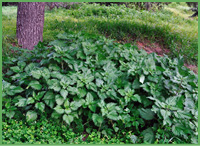
Many people consider stinging nettles a weed. However, considering that the plant is rich in iron and nitrogen, you should consider planting this in your garden – if only to add to your compost pile. The plant usually grows from 3- to 7-feet tall by the end of summer and dies back over winter. The stems and leaves are hairy, and the flowers are small and either green or brown.
The nettle excretes nitrogen, silica, iron, protein, and formic acid, giving strength and flavor to any crops growing close to it. If you need to pull the nettles, then add them to the compost. They make good companions to potatoes and horseradish plants. They are particularly helpful at stopping mold on tomatoes. The flowers attract bees.
Yarrow (Achillea millefolium)
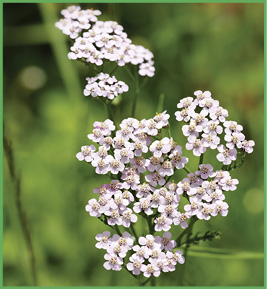
Yarrow is among the hardiest of the perennials and is considered a wildflower, weed, and an herb, depending on where you live. Both tall and dwarf varieties exist. The most common plants produce bright yellow flowers and there are some with red, pink, and white blooms. They are striking to look at and flower from summer to until frost hits. They can be grown from seed into the garden, or started indoors to transplant out when the soil has warmed. They prefer full sun and well-drained soil. They tolerate dry spells. Thin the plants to 1 foot apart, and the plants can be separated into several plants in the fall.
Yarrow is a good companion for vegetables, in particular cucumbers and corn. The plants also increase the essential oil content and aroma of herbs when planted close by. They attract beneficial insects like ladybugs and predatory wasps and repel bad insects. You can add yarrow leaves to the compost to speed up the decomposition process. Good companion plants include campanula, blanket flower, catnip, hardy geranium, Shasta daisy, and speedwell.
